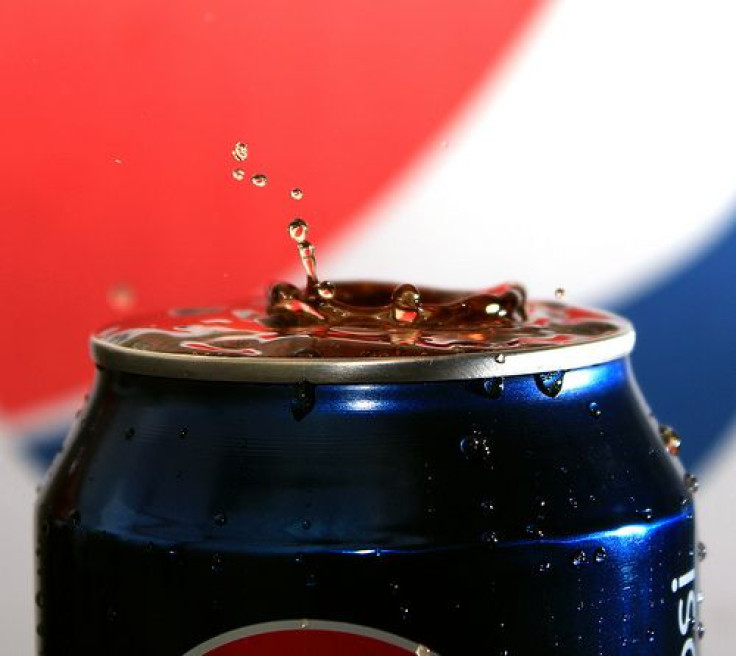Star Athletes Pushing Junk Food, Sugary Drinks: Has The Wheaties Era Come To An End?

In 1934, the first ever athlete graced the signature orange box of Wheaties cereal. It was Yankee great Lou Gehrig. For all his prominence, the Iron Horse didn’t even appear on the front of the box; he was relegated to the back — a move that would doubtlessly be interpreted by today’s standards as a slap in the face, as famous athletes enjoy supertstar status for their endorsements. But it isn’t whole wheat cereal they’re pushing anymore. It’s junk food.
A team of researchers from Yale University’s Rudd Center for Food Policy and Obesity analyzed the endorsement deals of the top 100 athletes, as judged by the Bloomberg Businessweek’s 2010 Power 100 rankings, which ranks athletes by their endorsement value and prominence in their sport. The team found that an overwhelming number of athletes endorsed foods high in calories and sugar, and low in nutritional value. The same went for soft drinks, which often appeared as sodas or sugary sport drinks.
"What stood out to us was the striking irony of the practice of having the world's most physically fit athletes endorsing these products," study leader, Marie Bragg, told Reuters Health.
Out of the 512 brands endorsed by athletes, 62 were food products and 46 were beverages. Shockingly, the team found 49 of the 62 food products were high-calorie, low-nutrition foods. Beverages told a similar story, with 43 of the 46 finding their extra calories from added sugar, the team wrote in Pediatrics.
Who’s Watching?
On their own, athlete endorsements serve the same function as the myriad other ads that bombard us throughout the day: they test our responsibility as consumers. The people who watch commercials of LeBron James guzzling Sprite or Dale Earnhardt Jr. chugging Mountain Dew can judge for themselves whether they need a day’s worth of sugar in one sitting — or so the conventional wisdom holds.
The problem is, rational adults aren’t the ones watching the commercials. Middle-aged couples are not idolizing LeBron James; teenagers are. Using TV-viewing data, Bragg and her team found a far greater percentage of adolescents and teens saw the ads over the course of the year than adults did.
"We know that children and (teens) are really affected by this type of thing," Emma Boyland, a researcher of marketing and children’s food choices, who was not involved with the study, told Reuters Health. "We know that influences the type of foods they choose and they eat."
It’s easy to deconstruct a child’s thought process. Unwise to the traps of marketing and advertising, he watches Peyton Manning endorse Pepsi, Gatorade, and — reassuringly — Wheaties, three products that make three different cases for why the child should buy. Pepsi tastes good and is refreshing. Gatorade hydrates you, gives you the mystical power of electrolytes, and also tastes good and is refreshing. Wheaties has whole grains and bran. The choice is a no-brainer.
“The promotion of energy-dense, nutrient-poor products by some of the world’s most physically fit and well-known athletes is an ironic combination that sends mixed messages about diet and health,” the team’s report states. In a country where childhood obesity has more than doubled in children and tripled in adolescents in the last 30 years, curbing poor habits has an immediate impact. According to researchers, athletes must take responsibility in who they endorse.
“It is possible that food companies associate with athletes simply because they are celebrities, but research shows that athlete endorsements are associated with higher healthfulness ratings on the products they endorse,” the team wrote. Unfortunately, companies like Wheaties are losing their grip on impressionable children as cereal sales continue to erode and athletes don’t see the compensation as worthwhile. Wheaties can’t compete with Gatorade in the financial field, so kids are the ones paying for it.
When asked whether his 2002 Olympic silver medal would be good enough to land him on a coveted Wheaties cover, 19-year-old half-pipe snowboarder Danny Kass replied, "I don't think I've ever eaten Wheaties in my whole life. If I was on something like that, I'd probably want it to be like Count Chocula or something cool."
Who’s Responsible?
Ultimately, the onus is on the parents, according to Bragg, to instill in kids a healthy dose of skepticism about the commercials they see on TV. It would help children to know, for instance, that their favorite athletes aren’t doing the commercials for free. Explaining the monetary incentives gets kids questioning, argues Kathleen Keller, a Penn State University researcher who studies food branding and eating habits.
"Within your home you can really teach your kids from a young age about what the purpose of marketing is, what the purpose of advertising is,” she said.
Harder to control is kids’ behavior outside the home, where they interact with friends and make decisions socially, illogically. Of course, adults are guilty of this, too: one needs only to look at the last time “I’m full” turned into “I’ll have the tiramisu” to understand that kids aren’t alone in succumbing to peer pressure. But the real takeaway is giving kids correct information with which to arm themselves. If they are to grow into rational, critical adults, their upbringing can’t foster dogmatism in celebrity endorsements.
“Professional athletes have an important opportunity to promote the public’s health, particularly for youth, by refusing endorsement contracts that involve promotion of energy-dense, nutrient-poor foods and beverages,” the researchers concluded. “In addition, countries worldwide should consider policies that would restrict food advertisements featuring professional athletes in youth-targeted media.”
Source: Bragg M, Yanamadala S, Roberto C, Harris J, Brownell K. Athlete Endorsements in Food Marketing. Pediatrics. 2013.



























